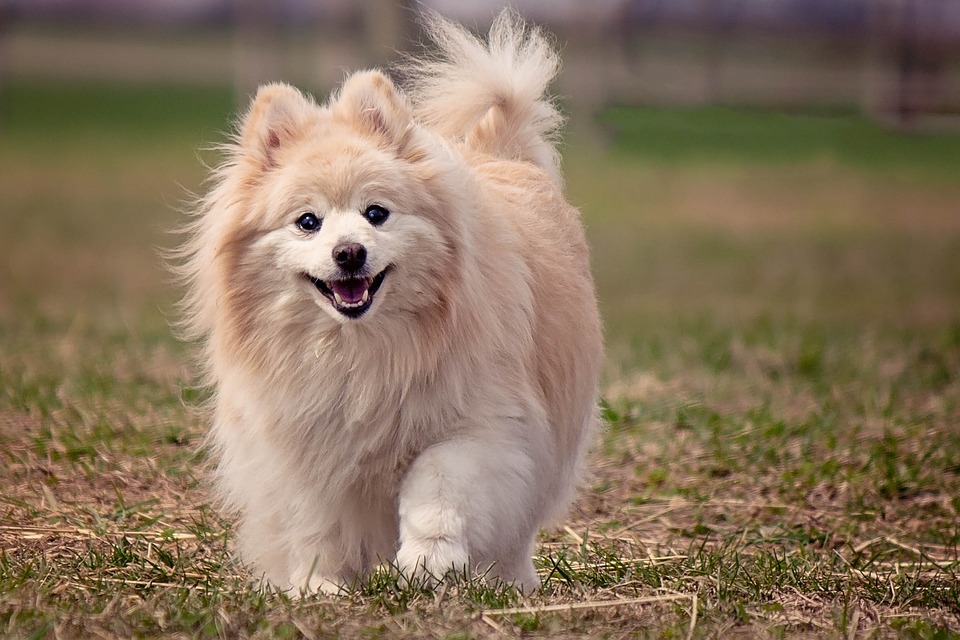 Crufts is the annual event where thousands of dogs compete to be crowned Best in Show! This famous British dog show is organised by the Kennel Club and takes place each year at the National Exhibition Centre (NEC) in Birmingham, UK. Dog lovers will watch their favourite pooches compete in different events with four days of canine competition. Our Crufts EFL lesson gives us a perfect platform to explore dog-related vocabulary as we await the excitement of the agility, obedience and heelwork challenges! Which pups will triumph? Watch this space!
Crufts is the annual event where thousands of dogs compete to be crowned Best in Show! This famous British dog show is organised by the Kennel Club and takes place each year at the National Exhibition Centre (NEC) in Birmingham, UK. Dog lovers will watch their favourite pooches compete in different events with four days of canine competition. Our Crufts EFL lesson gives us a perfect platform to explore dog-related vocabulary as we await the excitement of the agility, obedience and heelwork challenges! Which pups will triumph? Watch this space!
Crufts 2023 Programme
This year, Crufts runs from Thursday 9th March until Sunday 12th March. The show will see 18,000 dogs competing for Best in Show with various competitions running throughout the four days.
Other activities include dog training sessions, while there are also over 550 trade stands featuring lots of products and interesting offers for owners and their dogs. The show also has educational materials to help visitors learn more about responsible dog ownership – another interesting topic for a Crufts EFL lesson.
During the show, we will see who wins the Best in Group for all the breeds, while the pride of the competition is Best in Show, where judges decide on the best dog overall. The judges are looking for the dogs that match the idealised version of their breed (the ‘breed standard’) in terms of physical attributes, movement and personality.
Every day of Crufts will also have different competitions, including obedience, agility, heelwork, handling and flyball events to discover the cleverest, most agile dogs and most skillful handlers.
The show programme for Crufts 2023 runs as follows:
Breed Showing Groups:
Thursday 9th March: Gundog
Friday 10th March: Working and Pastoral
Saturday 11th March: Terrier and Hound
Sunday 12th March: Utility and Toy
You can watch Crufts live on YouTube and on More 4 and Channel 4, where Clare Balding will be presenting all the action from the NEC each day.
It could be useful to record some of the TV footage of the events to use in a Crufts English lesson, so students can listen to the commentary and discuss the performances.
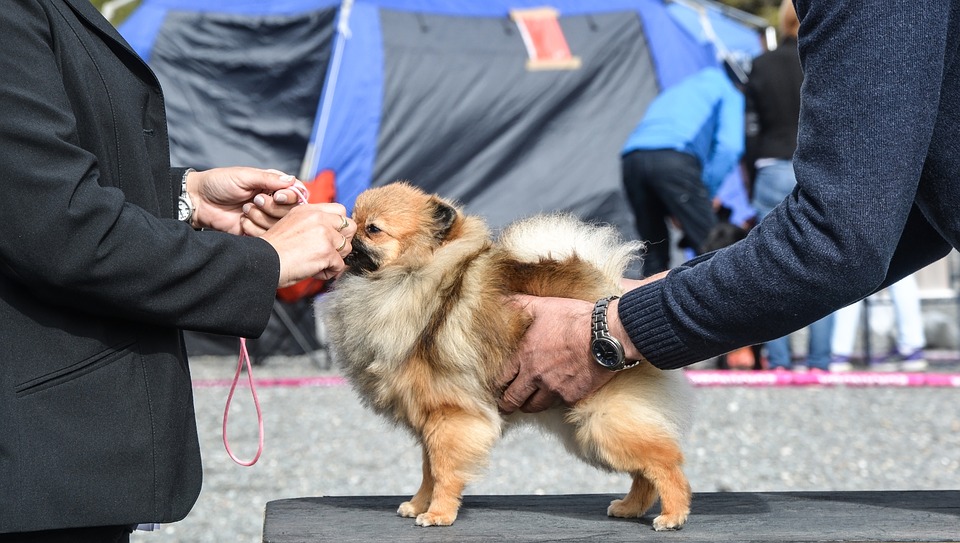
A Pomeranian competing in the Toy group at a dog show – image source
History of Crufts
The Crufts dog show was named after Charles Cruft, the general manager of a dog biscuit manufacturer. Cruft was able to travel internationally to dog shows as part of his job and soon had some ideas of his own about how to improve the shows.
The first official Crufts dog show was held in 1891 at the Royal Agricultural Hall in Islington, London. All breeds of dog were invited to complete with 2000 competitors in total. The success of the early shows led to more entries every year and by the early 20th century there were 3000 dogs taking part in the competition.
The Best in Show award was introduced in 1928 and won by a greyhound called Primley Sceptre. Today this prize is the most prestigious in the event. Every show dog owner dreams of their pooch winning Best in Show at Crufts!
Increasing popularity of Crufts
By the mid-thirties, there were over 10,000 entries each year and once the BBC started televising Crufts in 1950, it became even more popular with over 13,000 dogs competing.
In 1979, Crufts moved to Earls Court Exhibition Centre in London in order to cope with the increasing number of competing dogs and spectators. The competition increased to cover three days in 1982 and then to four days in 1987.
Crufts moved to its current day location of the NEC in Birmingham in 1991 and in the same year, the Guinness Book of Records (now known as Guinness World Records) officially recognised Crufts as the largest dog show in the world.
Today, Crufts sees around 28,000 dogs compete in the events each year with 160,000 human spectators and around 4.5 million people watching on television.
Crufts Format: How Crufts Works
To begin a Crufts EFL lesson, it is useful to discuss the format of the show, so students can understand who competes, what happens during the show days and what attributes the dogs are being judged on.
For a dog to compete in Crufts, it must have already qualified the previous year. Dogs can qualify by winning first, second or third place positions at other official Kennel Club shows. The Kennel Club is the governing and licensing body for dog shows in the UK and operates the national register for pedigree dogs.
In the early stages of Crufts, dogs compete against other dogs of the same breed, sex and age and the winners receive a Challenge Certificate. These winners go on to compete for the title of Best of Breed and the victor goes on to compete in the groups.
The group stage splits the competitors up by dog type for the dog shows, such as working dogs, toy dogs and terriers.
Crufts Breed Showing Groups
There are seven groups in Crufts: Working, Pastoral, Gundogs, Utility, Hounds, Terriers and Toys. The dogs compete within their groups to find Best in Group.
The Best in Group award looks for dogs that have physical attributes the judges accept as ideal for that breed.
Qualities the judges are assessing include the dog’s size, proportions, shape, coat, colour, stance, tail and teeth. Other assessment areas include the dog’s gait (walk) and attitude.
Finally, the seven winners of Best in Group compete against each other to win Best in Show. There is also a Reserve Best in Show for the second-place winner. Best in Show at Crufts is the most coveted award in the world of dog shows.
The Best in Show winner receives a replica of the silver Keddall Memorial Trophy and a token monetary prize of £100.
In addition to the show dog awards, there are also a number of competitions that test the skills of the dogs and their handlers. These are exciting and fun to watch and the dogs always seem to love the physical challenges of the competitions!
The dogs in the competitions have a different goal to the show dogs – these dogs are judged for their speed, agility, obedience and working abilities.
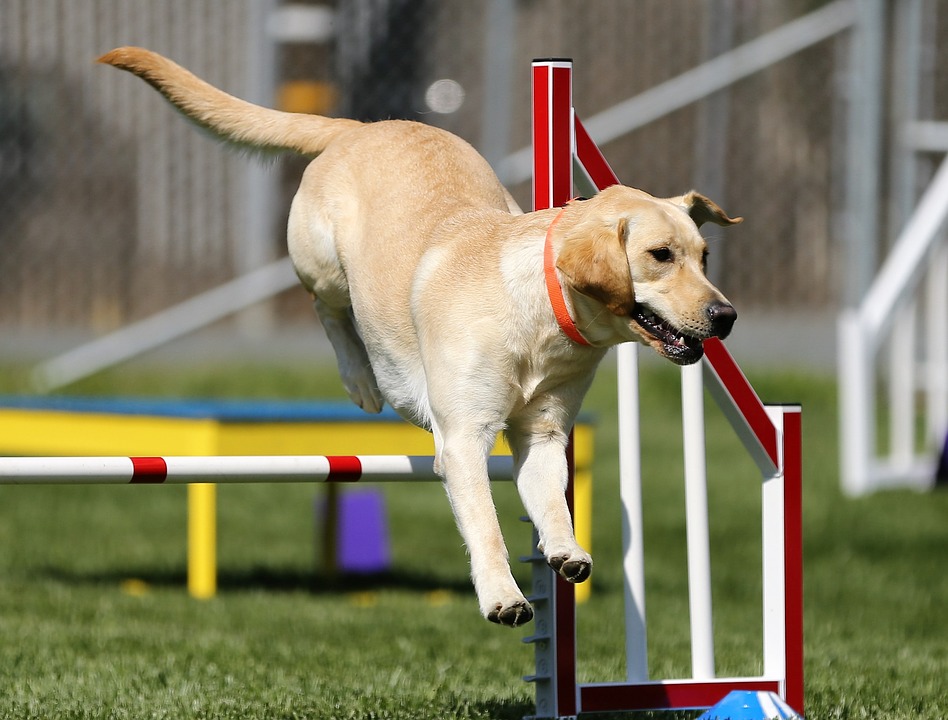
Labrador retriever competing in an agility test – image source
Crufts Competitions – Crufts Rings
The different competitions that make up the awards have changed over the years.
Working sheepdogs were first allowed to compete in 1955 when the Obedience Championships were introduced. Agility became a competition in 1980, Fly-ball was introduced as an event in 1990 and the Heelwork event arrived in 1992.
The Crufts competitions includes the following events:
- Agility
- Obedience
- Flyball
- Freestyle
- Heelwork to Music
There is also a special Gamekeeper class for working dogs, while young people under 25 can compete with their dogs in various events and aim for the title of World Champion Junior Handler.
Crufts Agility Competition
The Agility Competition in Crufts requires the dogs to complete an obstacle course within a time limit. Any mistakes are penalised by adding seconds to their result.
Students in a Crufts ESL lesson will find it fun to watch some of the agility challenges and discuss the events, such as running, jumping over hurdles and dashing through tunnels!
Crufts Obedience Competition
The Obedience competition in Crufts is held in its own arena to limit any distractions. The dogs must complete various challenges that test their obedience to their handler.
These tests include lead heelwork at differing speeds, scent discrimination, retrieving, sending away, staying and distance control.
Crufts Flyball Competition
The Flyball competition at Crufts consists of a relay race with teams of four dogs competing against each other in a knock-out competition.
The race requires dogs to jump over hurdles, release a ball from a box and return the ball to the start of the race, where the next dog in the team repeats the exercise. The Flyball event is highly popular with spectators.
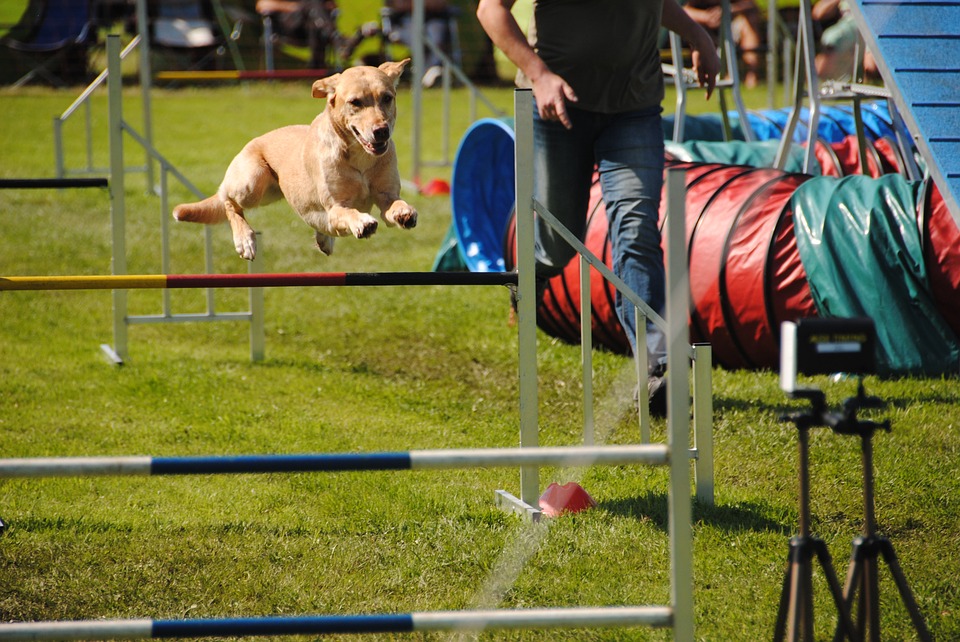
The dog’s handler runs alongside it during the races, directing and encouraging their dog as it completes the challenges – image source
Crufts Heelwork to Music Competition
The Heelwork to Music competition at Crufts is an obedience exercise performed as a choreographed routine set to music.
This gives another opportunity to discuss a different aspect of the show in the Crufts ESL lesson with a more measured and controlled approach to handling and sensitive choreography. Students can use this aspect of Crufts to discuss how music can affect behaviour.
Crufts Gamekeeper Competition
The Gamekeeper class at Crufts judges working dogs on their ability to work in the field. The dogs competing in this competition are from the gundog group.
The contest is different from the Best in Group show breed competition for gundogs, as this Gamekeeper event focuses on the dog’s ability to function as working dogs.
Scruffts Crossbreed Competition
Crufts also holds special competitions for cross-breed dogs. Such is the popularity of non-pure bred dogs, the Kennel Club now holds Scruffts, a dog show for mixed breeds.
The Scruffts show has many fun competitions, including Most Handsome Dog and Best Crossbreed Rescue for rescue dogs. Scruffts is also an important vehicle for teaching people about responsible dog ownership.
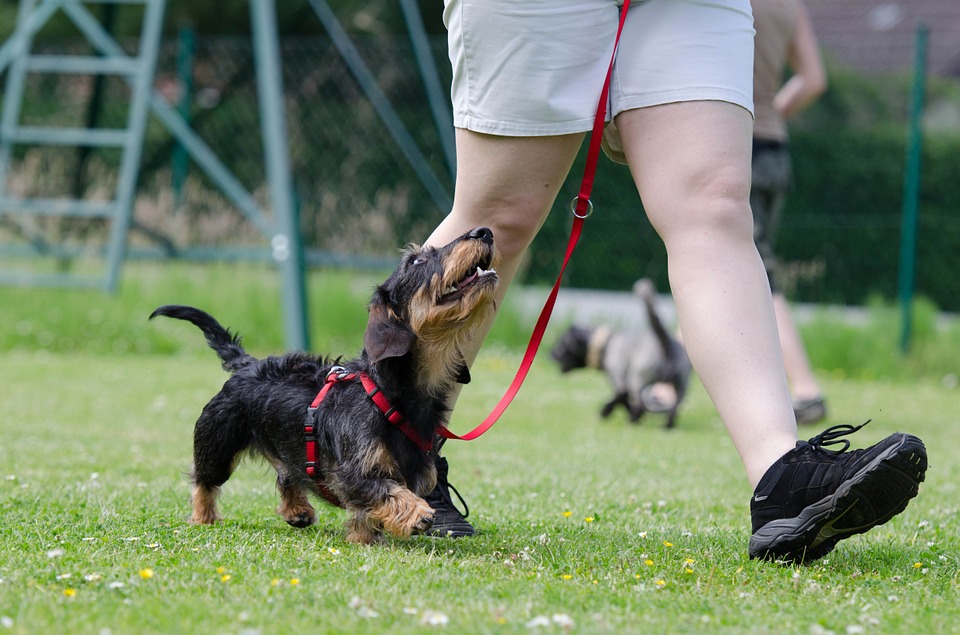
Dog obedience training – a dachshund walking ‘to heel’ – image source
Things to Do at Crufts
In addition to the shows for Best in Group and Best in Show and the different skill competitions, there are many more attractions at Crufts.
Dog enthusiasts can visit the Discover Dogs section of the show, which features information on all breeds recognised by the Kennel Club. Visitors can chat to expert dog owners and discover more about the different breeds of dogs, including their appearance, attributes and personalities.
The Discover Dogs section is a perfect chance for potential dog owners to find out which type of dog is the most suitable as a pet for their family.
The 160,000 visitors at Crufts can enjoy browsing trade stands with dog merchandise, while many dog charities are also present at the show.
Pets as Therapy will be attending Crufts will its assistance dogs or ‘PAT dogs’, who are specially trained to provide emotional support to people in need. Friendly PAT dogs (and other PAT animals) visit schools, hospitals, hospices, prisons and care homes with their handlers and help people to cope in challenging situations by serving as a friendly, non-judgmental companion.
Criticism and Health Concerns
Some critics of Crufts believe dog shows encourage unhealthy breeding of purebred dogs. Breeders trying to create an ‘ideal’ dog so that it might win Best in Breed, Best in Group and ultimately Best in Show. However, the RSPCA believes the health of purebred dogs is compromised due to this selective breeding process.
The concern is that some dog breeds suffer from health problems and deformities due to breeders trying to produce a dog that looks like the ‘standard’ for that breed (i.e. how the dog should look according to the national Kennel Club).
When breeders breed dogs with these desired physical traits, the resulting puppies are likely to possess even more exaggerated characteristics. In this way, selective breeding can result in unnatural extremes that can cause potential health problems.
For example, the French bulldog can have difficulties breathing due to its squashed nose, the dachshund can suffer from back problems due to its elongated shape, while the trend for sloping backs in German Shepherd show dogs has rendered some dogs crippled.
Selective breeding can also increase the risk of deformity and ill health if the parent dogs are relatives, which is the case with ‘line breeding’. This inbreeding can increase the risk of the puppies being prone to disease due to the parent dogs’ genetics being too similar.
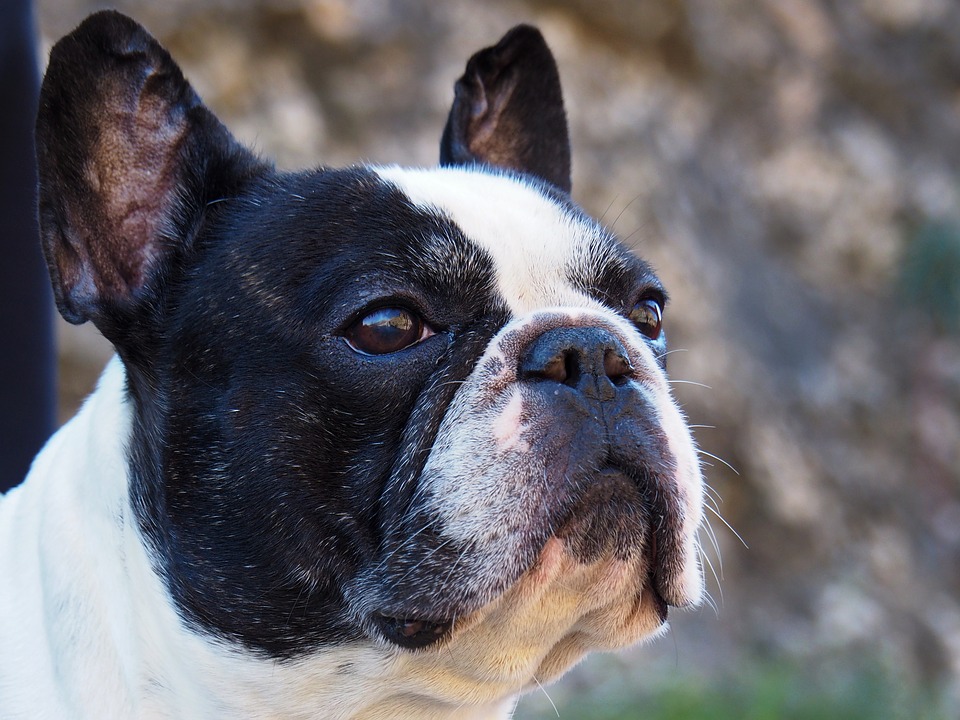
French bulldogs are prone to breathing problems due to their nose shape – image source
Dog Show ‘Beauty Pageants’
In addition to the health concerns, some people find the ethical concept of dog shows questionable.
The idea of rating dogs’ appearances in a canine ‘beauty pageant’ feels distasteful to some, as it could imply the inferiority of supposedly ‘non-perfect’ dogs. It could also suggest that the value of dogs’ existence is tied primarily to their physical appearance. Who are we to decide on the ‘ideal’ dog?
If a dog’s looks and personality adhere to stereotypes of that breed or a human-created standard, does that make them superior to other dogs? Does it make them ‘best’?
Some people also worry the dogs are uncomfortable during the shows, concerned that they might feel stressed when physically examined by strangers, groomed excessively and required to stand in a certain way for long periods of time.
Despite these objections to dog breeding and dog shows, the Kennel Club says its objective is ‘to ensure that dogs live healthy, happy lives with responsible owners’. It also seems that many dogs at the shows do appear to be enjoying themselves.
What do you think? This is a great topic to use in a Crufts EFL lesson for an advanced discussion on animal rights.
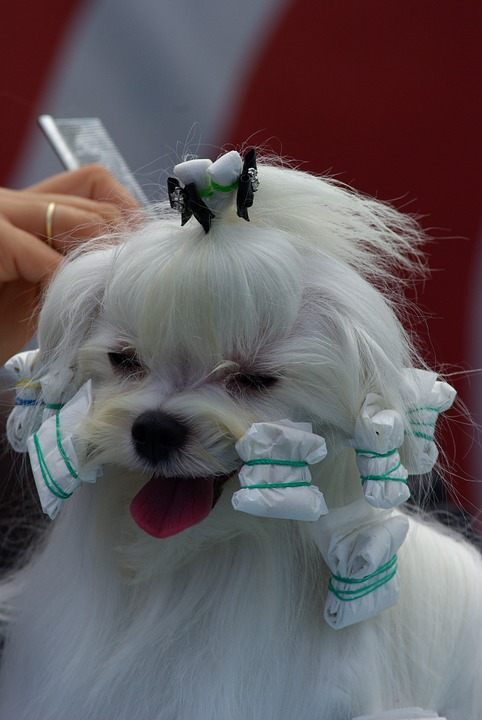
A dog preparing its hair for a show – image source
Crufts EFL Lesson
Crufts is a perfect time to explore dog vocabulary and phrases related to pets. A Crufts English lesson can include a discussion of the show and the different activities and competitions you can expect to see at Crufts. The discussion for the class could also include newspaper cuttings and online articles about the show.
Gap-fill exercises are ideal for a Crufts ESL lesson because you can test students on all the vocabulary presented in the first half of the class. For example, a gap-fill exercise could test grammar using the history of Crufts as a vehicle for the grammar structures. A gap-fill sheet could also use writing about Crufts to test student comprehension.
Gap fill exercises are versatile in this way, as they can be used to test different skills. You can even use the same text with different words blocked out or deleted, depending on the skill you are trying to test in your Crufts EFL lesson.
Crufts is also a perfect time to chat about family pets and bring in some dog-related vocabulary. We have collected some words and phrases related to dogs in our vocabulary list below. This topic can be a good springboard to talk about animals in general within the Crufts EFL lesson.
For an advanced Cruft English lesson, teachers could use the event as a vehicle to discuss criticism of dog shows, including the concerns over the health of purebred animals and moral issues with judging dogs (or anything / anyone) by their appearance.
It might also be interesting to consider if dogs have their own animal language and why dogs are so good at engaging emotionally with humans, relaxing us and working with us in many different areas of life, from the military to the care industry.
Dog Vocabulary
There are many words related to dogs and dog ownership, from words to describe a dog’s personality to dog accessories, dog commands and slang phrases. Browse some popular dog vocabulary here to use in your Crufts EFL lesson:
Pooch – affectionate word for a dog
Puppy / pup – a young dog
Doggie – child’s word for a dog / diminutive form of dog
Canine – relating to dogs or resembling dogs (dogs are members of the genus Canis)
Four-legged friend / furry friend – an affectionate way to talk about a pet
Man’s best friend – an affectionate way to talk about a dog
Dog kennel – a house for a dog
Dog kennels / kennels – boarding house for a dog, where people leave their dog to be cared for temporarily, while they are on holiday for example
Dog lead /leash – the long, thin material attached to a collar, used to lead and direct the dog
Dog collar – a collar is the leather or fabric circle around a dogs neck that the lead is attached to
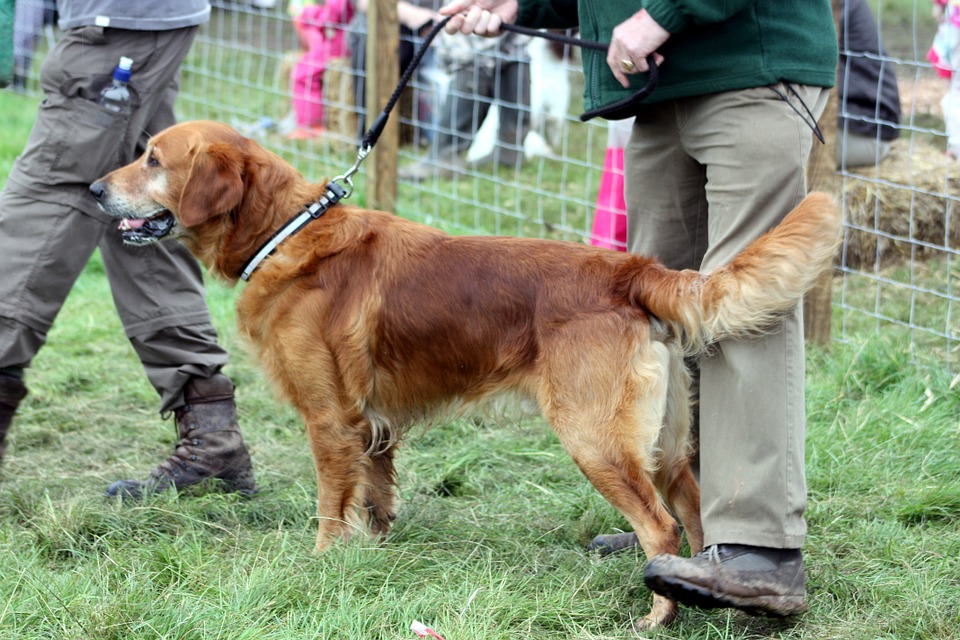
Dog wearing a collar and lead – image source
‘(to be) in the dog house’ – slang expression meaning that you are in trouble with someone / they are angry with you
hotdog – food consisting of a sausage in a long bread roll (a ‘finger roll’), usually with served with tomato ketchup and mustard
top dog – a person highly successful in their field or a person who is highly influential
dogged (adjective) / doggedly (adverb) – persistent / persistently, showing great determination and focus, unyielding and tenacious
dog-eared – heavily worn (if a book is dog-eared, the pages will be worn, battered or bent over at the corners)
Dog training – teaching your dog to be obedient (your dog is hopefully ‘easy to train’)
House-trained – a dog that has been trained not to go to the toilet inside the house
Obedient – obeys commands
Disobedient – does not obey commands
walking ‘to heel’ – when a dog walks beside its handler keeping to the same pace, not in front or behind
Sit / Stand / Heel / Fetch / Wait / Stay – common dog commands requesting the dog to obey an order
gait – way of walking
stance – way of standing
coat – the hair or fur (‘coat’ can also mean a jacket as an item of clothing)
Shiny coat – describes the hair or fur (‘coat’) of the dog. ‘Shiny’ means it catches the light, which means that hair is healthy and in good condition
Bright-eyed – describes the eyes of the dog. ‘Bright’ eyes mean the eyes are clean, alert and in good health
Service dog – dog working to assist someone with a disability
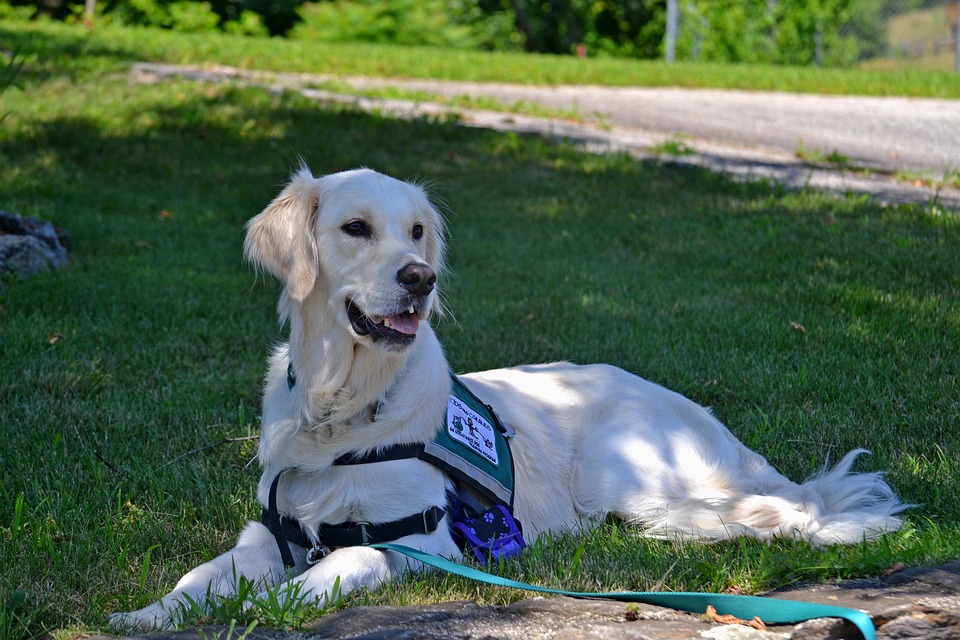
A golden retriever working as a service dog – image source
Guide dog – dog trained to help blind people (often Labradors and golden retrievers)
Working dog – dogs who work in the fields (such as sheep dogs) who are trained to work with livestock
Police dog – dog trained to assist the police (often called a K-9 or K9 – sounds like ‘canine’)
Guard dog – dog who guards a property
Watch dog – a guard dog (‘watch dog’ is sometimes used to mean monitoring something closely)
Pack animal – dogs are ‘pack’ animals, which means they like to live in groups or packs (as opposed to solitary animals, such as cats, who are usually happy to live alone)
Loyal – faithful
Walk / ‘walkies’ – popular dog exercise, a good bonding time for owners and pets
Chasing its tail – a dog chases its tail when it turns in circles to try to catch its own tail in its mouth
Chasing after the ball / Playing ‘fetch’ – a popular game and great for exercising your dog (you throw a ball and your dog chases after it, bringing it back to you – and you throw it again!)

Dogs enjoy picking up sticks! image source
Wagging its tail – when your dog shakes its tail, usually when it is happy
Wagging – waving, shaking, swaying
Panting – breathing quickly (a dog pants when it is out of breath, excited or needs to cool down. This means the dog has its mouth open and tongue out.)
Dog jacket / clothing – your dog can wear a waterproof jacket or warm coat in cold, windy or rainy weather
Dog toys – toys for your dog, such as plastic chews and squeaky toys
Dog bed / basket – where your dog sleeps and rests
Bone – dogs love to chew on toy bones (they also enjoy real raw bones, but owners shouldn’t give dogs cooked bones because they can splinter into small pieces)
Dog food / dog biscuits – your dog eats dog food and dog biscuits especially created for canines
Dog bath – dogs enjoy going in the water and a bath keeps your pet clean
Lassie – a famous dog character from TV. Lassie was a rough collie, an intelligent long-haired breed of dog
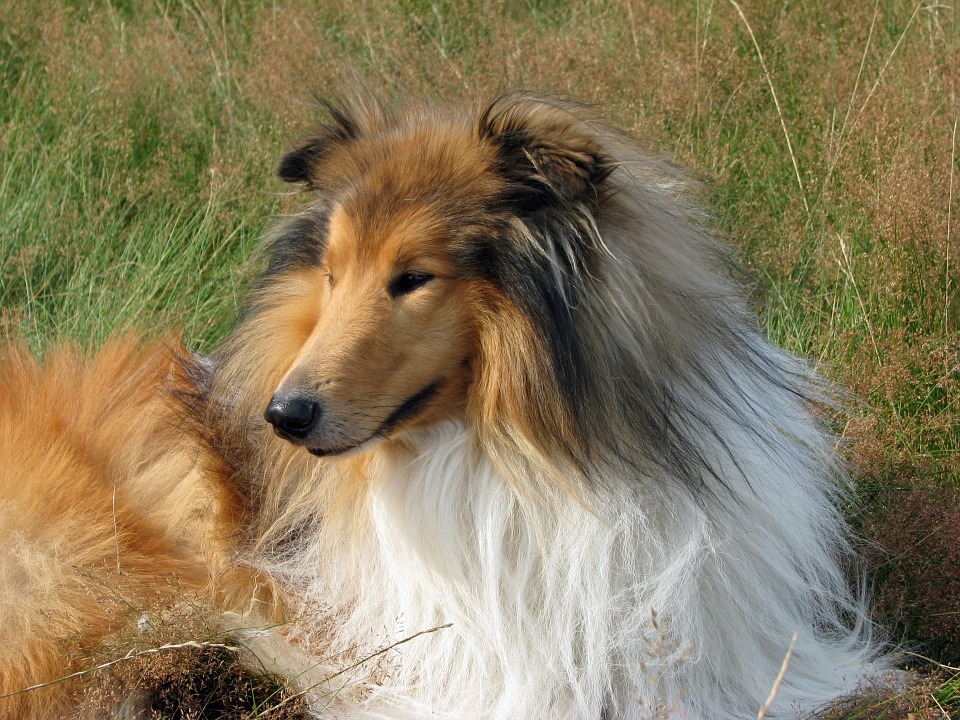
Lassie the rough collie was a heroic character in a popular TV series – image source
Dog breed – type of dog, the qualities that define a dog and separate it from other types of dogs (the Kennel Club recognises 211 different breeds of dog)
Long-haired / short-haired – describing the length of your dog’s hair
Cross breed / mixed breed /mongrel – a cross breed or mixed breed is a dog whose parents are not pedigree and they are different breeds or unknown
Mutt – a mixed breed dog, often used as a term to describe a dog of unknown or humble origins (the cat version is ‘moggie’)
Breeding – the act of mating selected dogs to produce offspring with particular desired physical and /or emotional characteristics (controversial due to the ‘unnatural’ combinations that can result, which can potentially lead to health problems)
Purebred – a purebred dog is one whose ancestry is known to the breeder. Purebred dogs are usually registered with a breed club but not all purebred animals have a written record of their lineage. There are some concerns about the health of purebred dogs, as the have a narrower set of ancestors and health problems can result.
Pedigree – pedigree dogs are registered with a breed club and have a written record of their lineage or breeding. Pedigree animals might not always be purebred.
Showdog – a purebred dog that competes in shows (showdogs must conform to breed type and exhibit exceptional qualities to judges)
Popular dog breeds
It can be useful to discuss dog breeds in a Crufts EFL lesson, as students can talk about their own family dogs, their temperament, appearance and their favourite dog breeds. Some popular dog breeds include:
Labrador, Golden Retriever, Poodle, Yorkshire Terrier (Yorkie), Scottish Terrier (Scottie), Jack Russell Terrier, Cocker Spaniel, King Charles Spaniel, Corgie, Greyhound, Whippet, Chihuahua, Dachshund (often called a ‘sausage dog’ due to its shape), German Shepherd (previously known as Alsation in the UK), Staffordshire Bull Terrier, Old English Sheepdog, Great Dane, Mastiff, Rottweiler, Bulldog, Boxer, Pug, Collie, Husky, Dalmatian
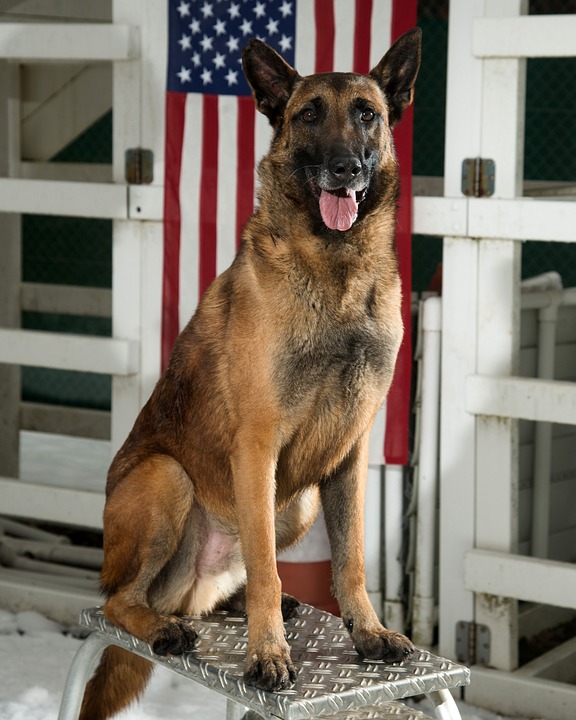
German shepherds are often used as police and army dogs because of their characteristics, including high intelligence and athleticism – image source
Crufts 2023 Winner:
Congratulations to Orca the Logotto Romagnola from Croatia, who won Best in Show 2023!
The Reserve Best in Show award went to Delia the Old English Sheepdog from Italy.
Share your thoughts on Crufts and dogs
Do you enjoy watching Crufts?
What is your favourite dog show event or activity?
Do you think dog shows could encourage purebred health issues? Do you think selective breeding is dangerous?
What other dog-related words and phrases should we include in our vocabulary list?
What activities would you include in a Crufts EFL lesson?
Let us know your thoughts and ideas in the comments!
